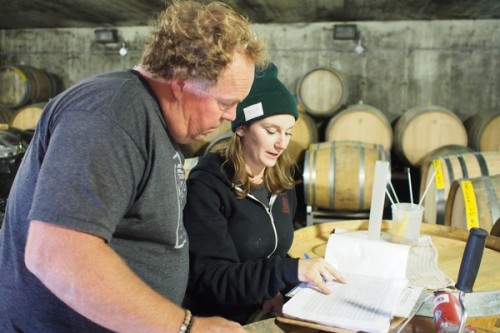
Chardonnay is a big focus at Norman Hardie. In yesterdays’ post from vintage here, I described the way the grapes are received at the winery in plastic bins. If the fruit is in good condition, there’s no need to sort (the best sorting is done in the vineyard, picking only healthy fruit). Otherwise, they pass along the sorting table and then go to the press. The press here takes up to five tons at a time, and pressing usually takes around 2 hours. The resulting juice is allowed to oxidise a bit: there’s a relatively fast enzymatic oxidation that turns it brown. The idea is to oxidise the easily oxidisable elements in the wine (certain phenolics) which then makes the wine more stable later in its life.
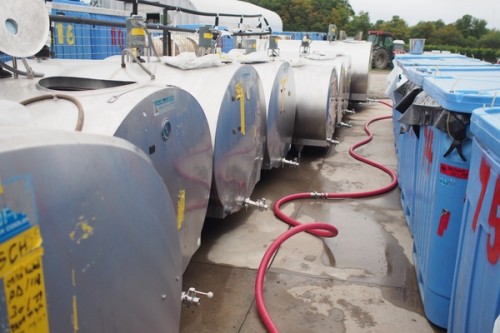
This juice usually doesn’t have anything added to it (sometimes a bit of tartaric acid might be added), and goes to tank. There, fermentation is left to begin naturally. This is monitored pretty closely, and if nothing is happening after a few days then Norm is quite happy to inoculate, either with a pied de cuve (a small natural fermentation started in a demijohn), or with a cultured yeast. If the ferment gets too stinky early on, then he might rack and return to give it some oxygen, or add some nutrients (Fermaid).
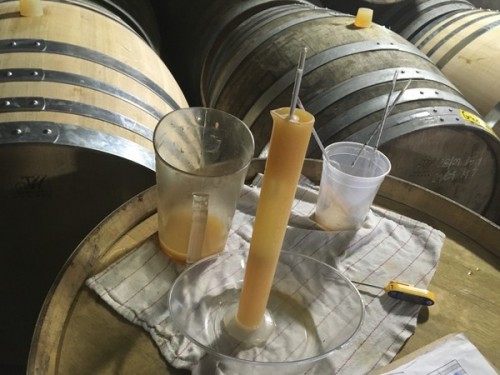
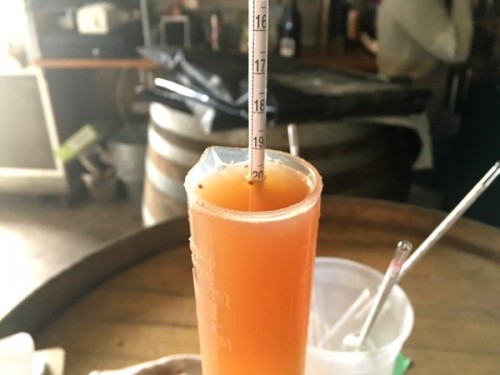
The idea is to get these natural ferments going strongly before taking the wine to barrel. One of my jobs here was to help Claude with tracking all the white wine ferments. She’d fetch samples, and I’d measure the Brix by looking at specific gravity, and then correcting for the temperature. This way, it’s possible to track the progress of each tank and barrel.
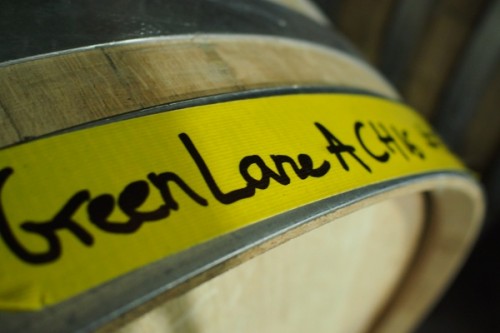
At the right stage, the Chardonnays are transferred to barrels in the barrel hall. First, it’s necessary to put the barrels into place: here they are stacked two high. These 500 litre barrels are heavy, and it takes two people to lift and roll them when they are empty: there’s no way you can move them when they are full. Norm checks each barrel before it is filled, and if it smells too much of sulphur dioxide, it needs to be rewashed, or the fermentation could be affected. The once the barrels are in place, they are filled from the tanks via a hose trailing through the winery and entering the barrel cellar via an improvised hole drilled in the concrete wall.
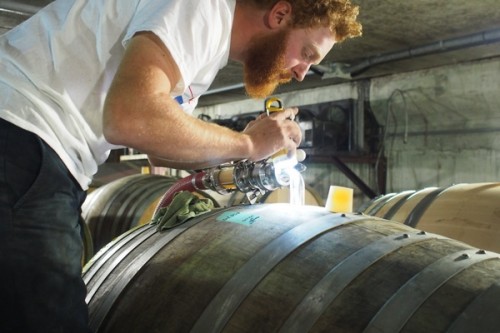
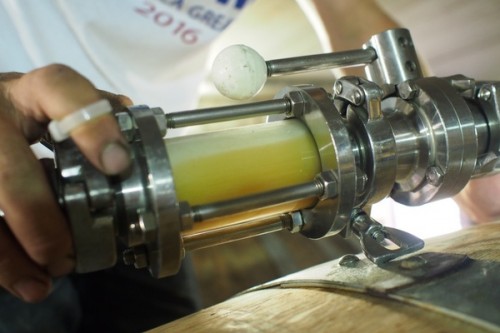
For those barrels that are actively fermenting, some battonage is used. This is the process where a metal pole is used to stir the wine, mixing up all the yeast lees at the bottom of the barrel and keeping everything mixed up nicely. I spent about an hour doing this, and it was quite therapeutic.
Those Chardonnays will stay in barrel for almost a year, and they’ll be topped up and monitored at regular intervals. Tasting the fermenting wine now, it’s hard to extrapolate to the finished product, but this is something that experienced winemakers are good at. Making great wine certainly starts in the vineyard, but it also requires great skill and attention if you are to be able to do it on a consistent basis. Winemaking itself is lots of little details, and fortunately the vintage crew here all really care and don’t cut corners, even though this would make their life a lot easier.
Here’s a video of the process: